We try to respond proactively to residents' needs, rather than reactively.
Anna Thomas, deputy public health director
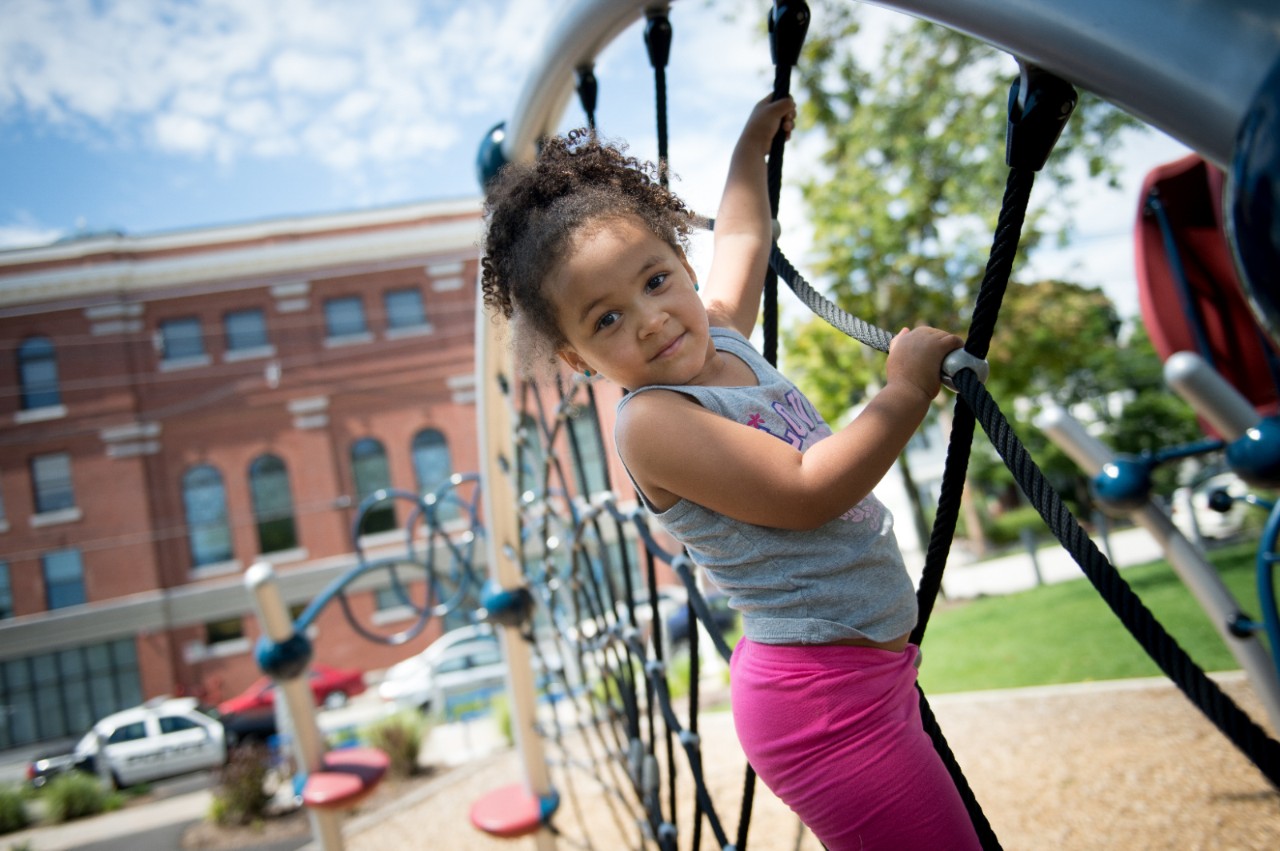

2016 RWJF Culture of Health Prize Winner
Weaving Health Into the Community’s Fabric
Founded along the Merrimack River in the early 19th century, Manchester, N.H., sprang from a utopian vision: create an industrial center to rival its English namesake, complete with sprawling, red-brick textile mills, workers’ quarters, schools, libraries, theaters and parks for all who lived and worked there. But as manufacturing sagged in the latter half of the 20th century, the city lagged as well.
Today, in a transformation that has spanned the past several decades, the city’s business core has repositioned itself for the 21st century. Manchester has evolved into a mid-sized city, and Elm Street—its main thoroughfare—has become a thriving urban hub with trendy restaurants and coffee shops. A few blocks away, long-vacant mill buildings are now home to tech startups, loft condos and two universities.
Now this city of 110,000 people is applying the same resilience and determination that sparked the mill-yard comeback to what may be an even tougher challenge: Revitalizing health and well-being throughout Manchester’s neighborhoods, many of which struggle with common urban afflictions such as poverty, violence, homelessness, and the impacts of the opioid epidemic that has brought national attention to Manchester and other New England cities. Manchester’s health promotion efforts focus on building and bolstering neighborhoods, an approach that harkens back to a time when the city’s earlier immigrants created tight-knit communities and strong support networks. In this context, block parties, schools, community centers, homes and fire stations have become tools for growing trust and delivering services while boosting health and well-being.
“We really focus on where people live and their daily lives,” says deputy public health director Anna Thomas. “We try to respond proactively to residents’ needs, rather than reactively.”
The largest city in a rural and affluent state—and in all of Northern New England—Manchester faces challenges similar to those of larger urban communities. The city is more racially and ethnically diverse than the rest of New Hampshire. And while the state has the nation’s lowest child poverty rate—below 10 percent—one in four children in Manchester lives in poverty. Manchester also has the state’s highest violent crime rate, with the most elevated levels concentrated in its highest poverty neighborhoods. And last year, nearly 1 in 4 drug overdose deaths in New Hampshire happened in Manchester.

Anna Thomas, deputy public health director
The city’s government, nonprofits, healthcare institutions, resident groups and businesses have long invested in neighborhood-based programs to address emerging concerns and improve health. But they were energized to act more strategically when, despite the city’s efforts, health and socioeconomic outcomes continued to trend in the wrong direction. The Manchester Health Department and its many partners wasted no time, going door-to-door with surveys and holding public forums to collect feedback that informed its 2014 Neighborhood Health Improvement Strategy, a new, more tightly integrated plan for reducing health and environmental inequities. The plan prominently positioned socioeconomic factors—such as poverty—as the focus of its recommendations, called for collective action through multidisciplinary partnerships, and identified strategies known to be effective at improving outcomes and changing systems.
Many community members who were surveyed cited education as their top concern. In the forum that gathered input on how to help Manchester’s children succeed in the classroom, residents described their ideal city as one that addresses the needs of the “whole child.”
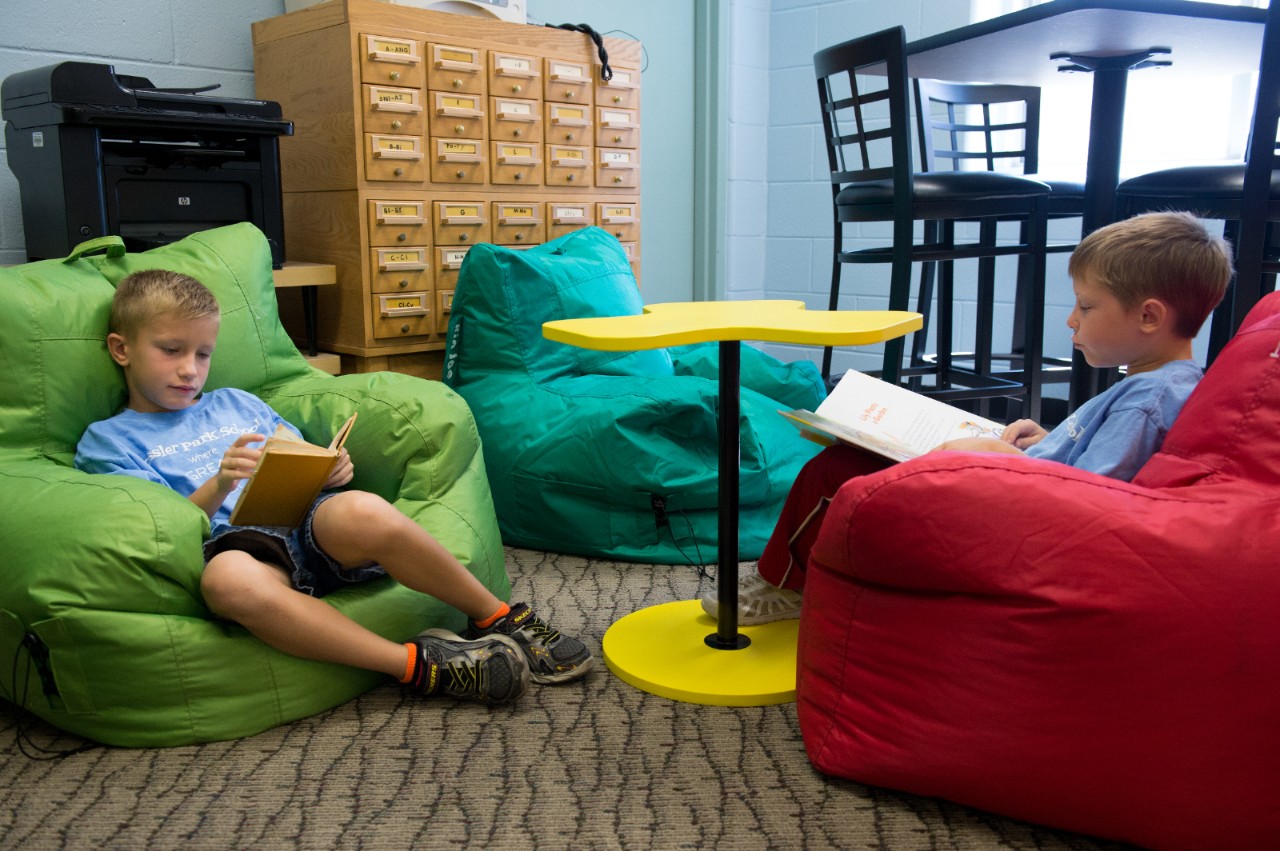 Students Gage Bouchard, left, and Curtis Bouchard, read books in the library at Gossler Park Elementary School.
Students Gage Bouchard, left, and Curtis Bouchard, read books in the library at Gossler Park Elementary School.
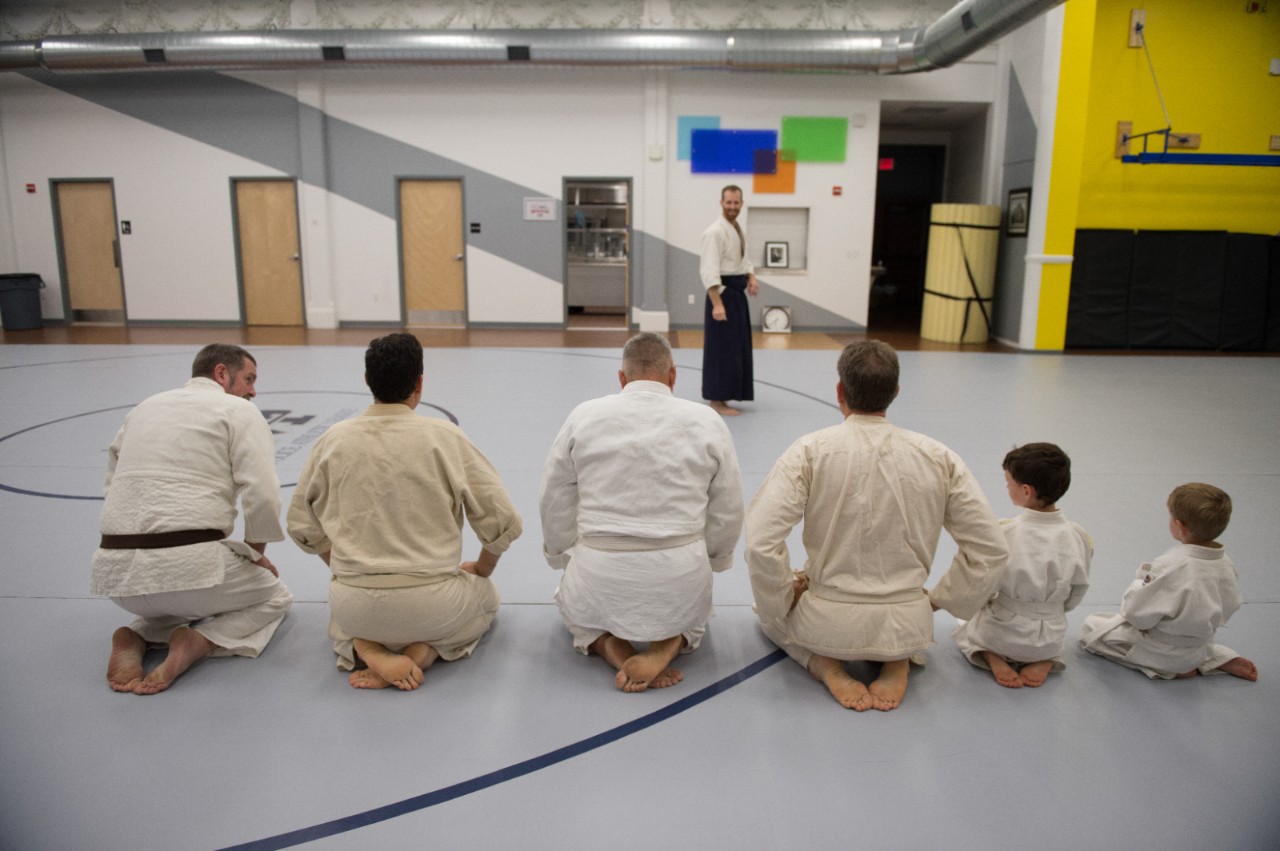 Participants in a martial arts class at Manchester PAL line up to "bow in."
Participants in a martial arts class at Manchester PAL line up to "bow in."
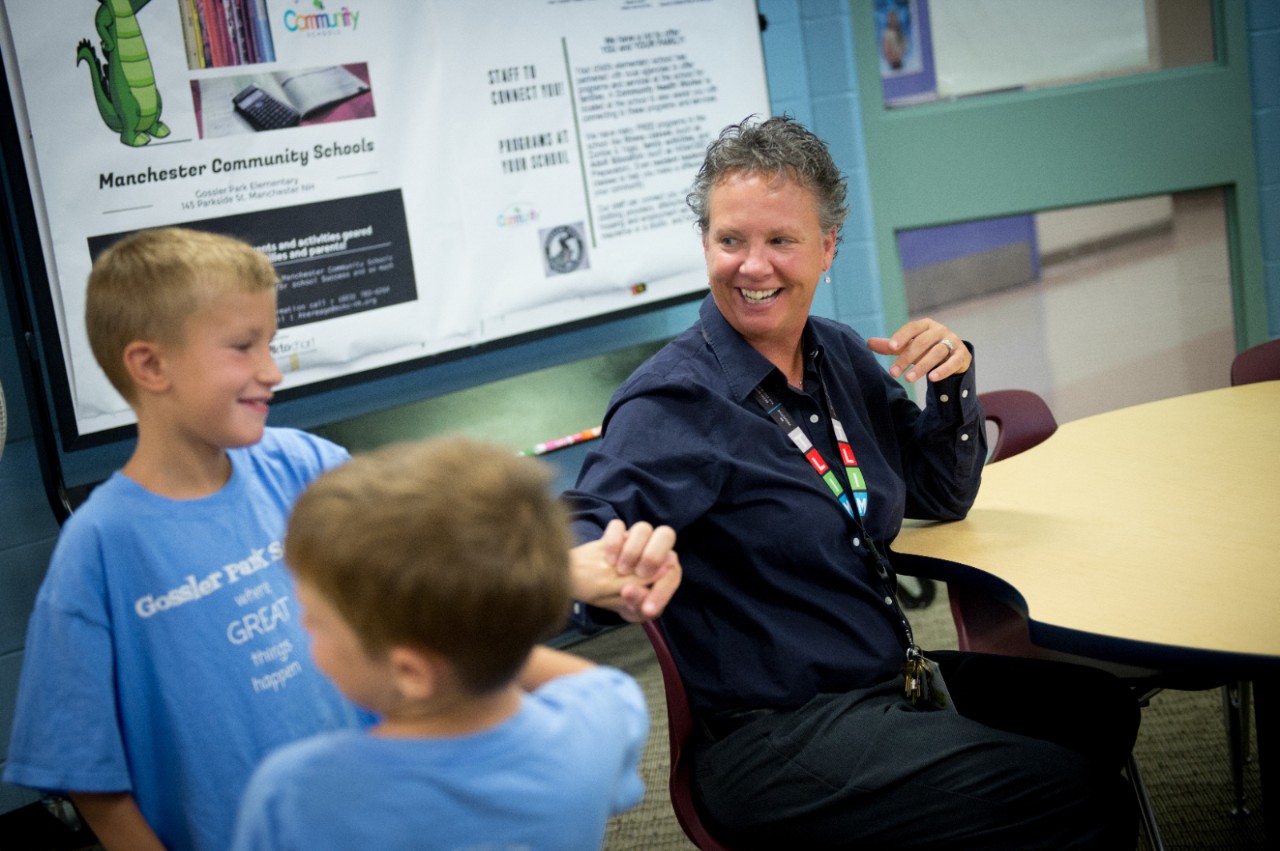 Lori Upham, principal at Gossler Park Elementary School, laughs with students.
Lori Upham, principal at Gossler Park Elementary School, laughs with students.
Manchester is doing just that. Two main “community schools” provide a wide range of social services and education support to children and families in several of Manchester’s most challenged neighborhoods, and two additional elementary schools are developing into community schools. Other projects have flowed out of the goals of the Neighborhood Health Improvement Strategy, including a successful effort, supported by Easter Seals New Hampshire, to boost by 25 percent the number of children who have received appropriate developmental screening by offering it at childcare settings and schools. The city’s Police Department, in partnership with the Manchester Community Health Center and the YWCA, also has launched a new Adverse Childhood Experiences Response Team, which sends a crisis worker and a case manager along with police when they respond to domestic violence or drug overdose incidents at which children are present. A first of its kind in the country, the project aims to immediately connect children to services that help them avoid the anxiety, depression and other problems that can come from witnessing traumatic events.
“Childhood poverty has just kept growing,” says Tim Soucy, Manchester’s director of public health. “We realized if we were ever going to have an impact on the next generation and bring our collective efforts to scale, we needed to get way upstream with kids and families to address education, employment and the other social determinants of health.”
It’s taking a village to get there. Kris McCracken, president and CEO of the Manchester Community Health Center, says in her 20 years in the city, she’s never seen such a spirit of collaboration on issues of health. She likens what her organization and others in Manchester are doing to a tree growing from a boulder. “We’re the tree; the city’s the boulder,” she says. “Things grow as they need to survive, and we should be adapting and responding to the needs of the city.”
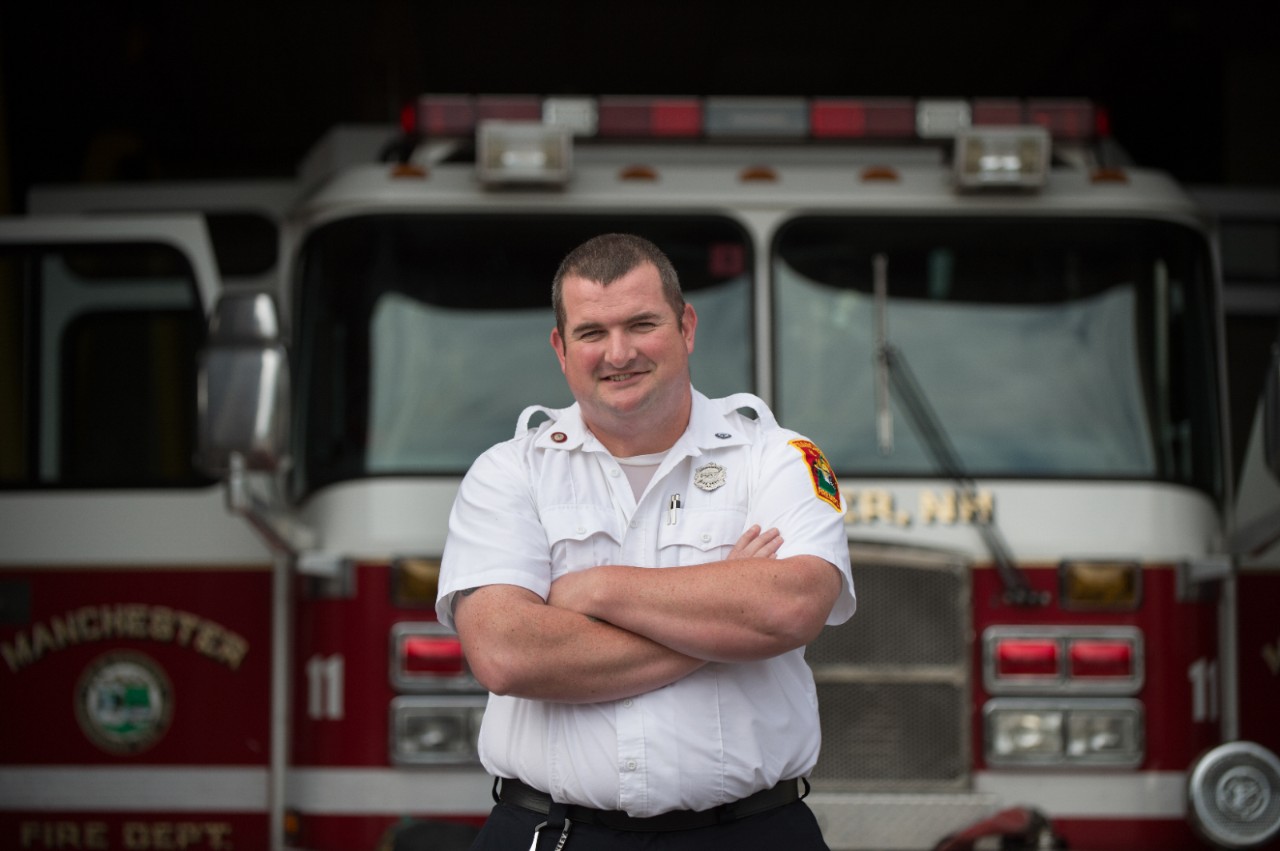 Dousing the Fires of the Opioid Epidemic
Dousing the Fires of the Opioid Epidemic
A bad month for opioids in Manchester, N.H., meant 30 overdoses when Chris Hickey first started working as a paramedic in the city 15 years ago. These days, the emergency medical services officer says Manchester’s emergency responders see 60 to 70 suspected overdoses each month. More than a half dozen of those are fatal, which represents a nearly 12-fold increase in the city’s overdose deaths between 2003 and 2015.
The spike mirrors a national trend, with opioid prescription drugs, heroin and illegally manufactured fentanyl fueling a 137 percent increase in deaths from drug overdoses between 2000 and 2014, the most recent year for which statistics are available.
“You have people of all backgrounds, of all ages who are all overdosing,” Hickey says. And those are just the emergency cases, he says. “We know that we have a large group of the population who are functioning addicts.”
How does one reach those who are addicted before they overdose? A small piece of the answer appeared to Hickey this spring when another firefighter’s stepbrother—homeless and struggling with heroin addiction—posted suicidal messages on Facebook and his family sent him to the fire department for help. It was the first time Hickey had encountered an addict who really wanted to take the first steps to get better. The two drove in Hickey’s pickup to Hope for New Hampshire Recovery, an organization that helps people overcome addiction. Three days later the man was in an inpatient treatment program, and Hickey was writing a proposal to Manchester’s mayor to turn fire stations into intake centers, where people could come without fear of being arrested.
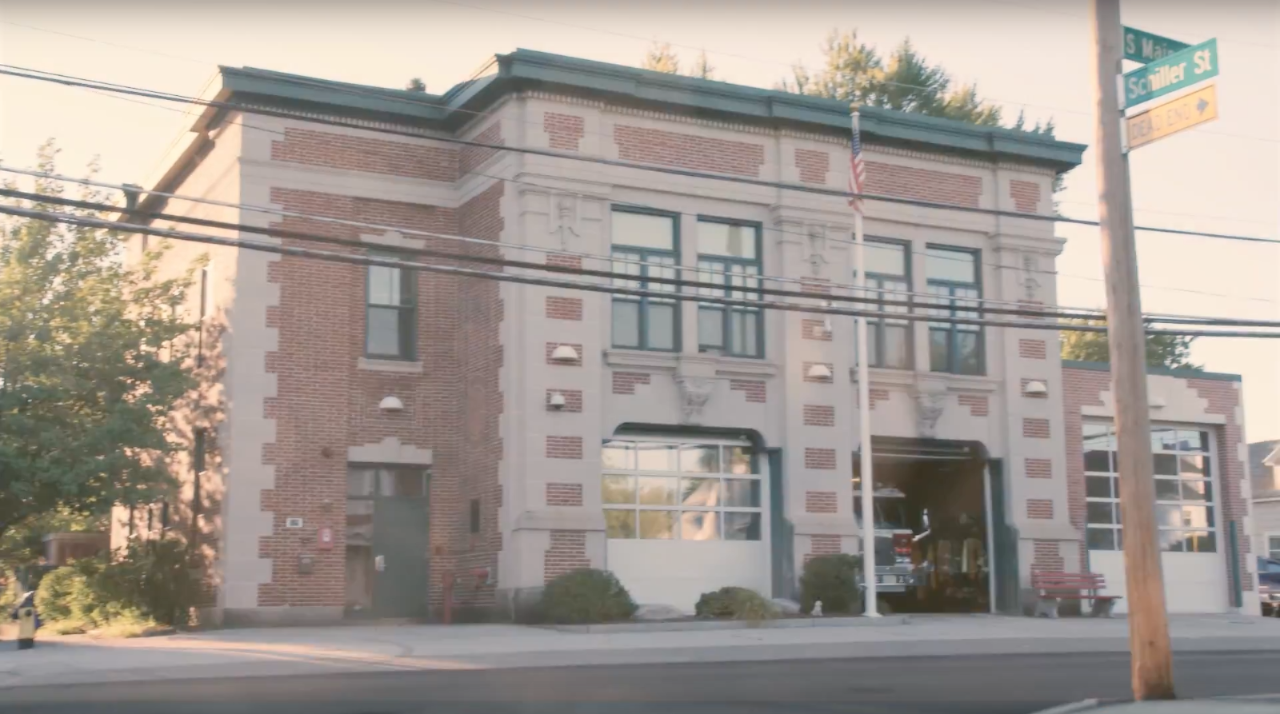
Chris Hickey, paramedic
Safe Station, as the initiative is called, launched in May 2016 in Manchester’s 10 fire stations. Within the first four months more than 420 people had sought help and been referred to treatment. Twelve people came in on Father’s Day, the program’s peak day. “They wanted to get better to be with their kids,” Mayor Ted Gatsas says.
Stephanie Bergeron, interim CEO of Serenity Place—a nonprofit treatment center in Manchester and a Safe Station partner—says all involved want to make the model as easy as possible for other communities to replicate. For her part, she would like to ramp up Serenity Place’s staffing on the weekends to accommodate Safe Station patients any time of the week.
“You want to catch people right at that moment when they’re ready to come in,” she says.
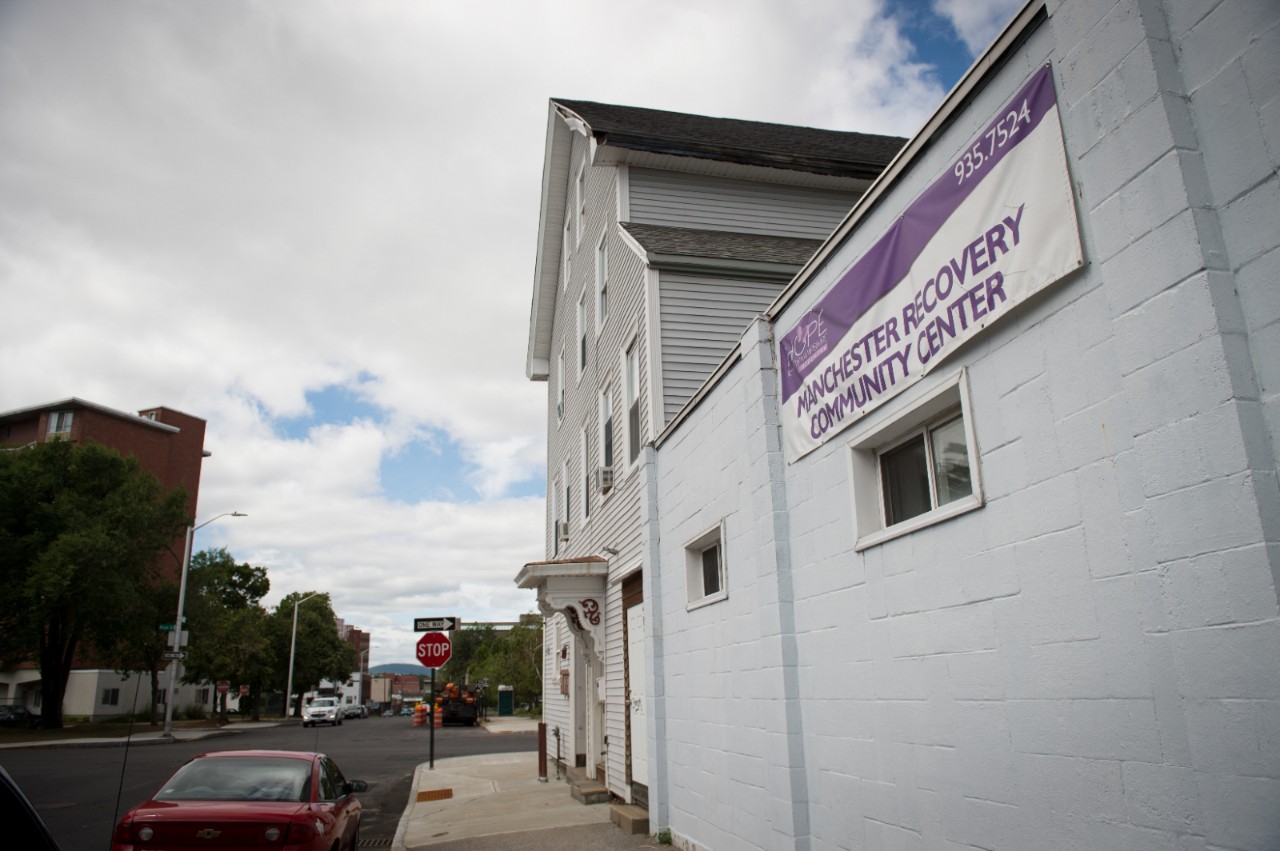
When Manchester, N.H., rolled out its Neighborhood Health Improvement Strategy two years ago, the dedicated volunteers of Granite United Way seized an opportunity to shake up their organization’s investment in the city and boost its impact on health and well-being.
Though the volunteer-led Granite United Way had increased giving in Manchester in recent years, the organization wasn’t seeing enough measurable, positive change, says president and CEO Patrick Tufts. “We had to look in the mirror and say, ‘Are we funding the right things if community issues aren’t improving?’”
The Neighborhood Health Improvement Strategy provided just the roadmap the city and philanthropies like the United Way needed. Focused on Manchester’s most impoverished areas and written with input collected from community members via surveys and forums, the strategy put each neighborhood’s needs front and center. Residents had expressed their vision of an ideal city that provided supports for parents, initiatives that address crime and substance use, free fitness programs and affordable public transportation, among other resources.
The Granite United Way’s volunteer leaders listened, and then acted.
The organization took the controversial step of aligning its grant-making with the goals of the Neighborhood Health Improvement Strategy. That meant funding fewer programs and focusing on collaborative, multi-year strategies. One of these was the Manchester Community Schools Project—already established by the city at two elementary schools—which serve as neighborhood hubs providing a wide range of social services and education support to children and families.
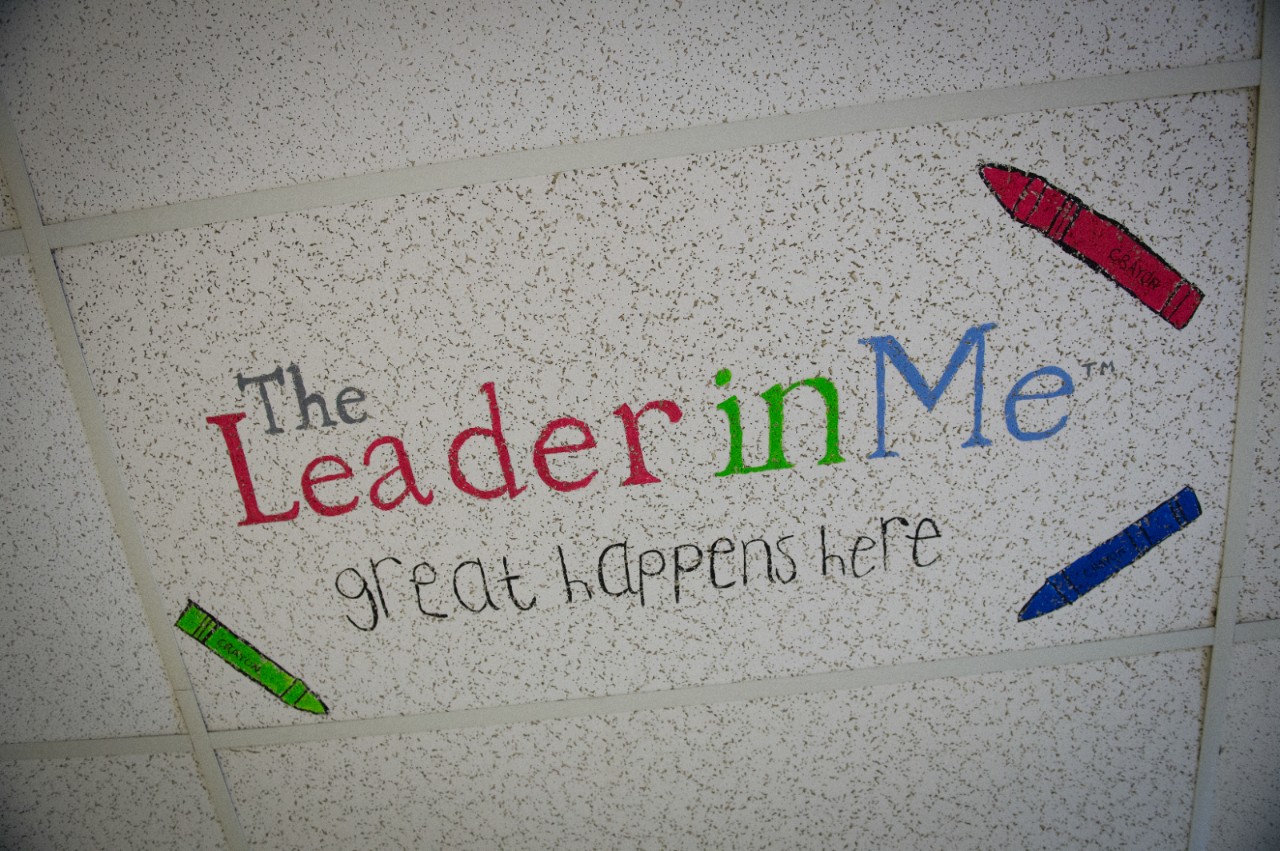 Decorations supporting the Leader In Me program hang throughout Gossler Park Elementary School.
Decorations supporting the Leader In Me program hang throughout Gossler Park Elementary School.
Christina Lachance, vice president of Children’s Services at Easter Seals New Hampshire
The decision was not popular among some Manchester nonprofit service providers, particularly several organizations used to offering programs at their own facilities, rather than going out into the community, Tufts says. “When we said we were going to start providing services in the schools, it really messed with their model.”
But a year later, many of the resistant have come around and regained Granite United Way funding they lost at the outset. Others, such as Easter Seals New Hampshire, welcomed the change from the get-go.
“We’re excited to be getting out of our building and to be collaborating with the health department and schools,” says Christina Lachance, the organization’s vice president of children’s services. Easter Seals last year began offering evening classes at Manchester’s community schools to prepare parents for high school equivalency testing. In the past, the group has had trouble filling similar classes. Now that they are marketing and offering the classes to parents right in their neighborhood schools, there’s a waiting list.
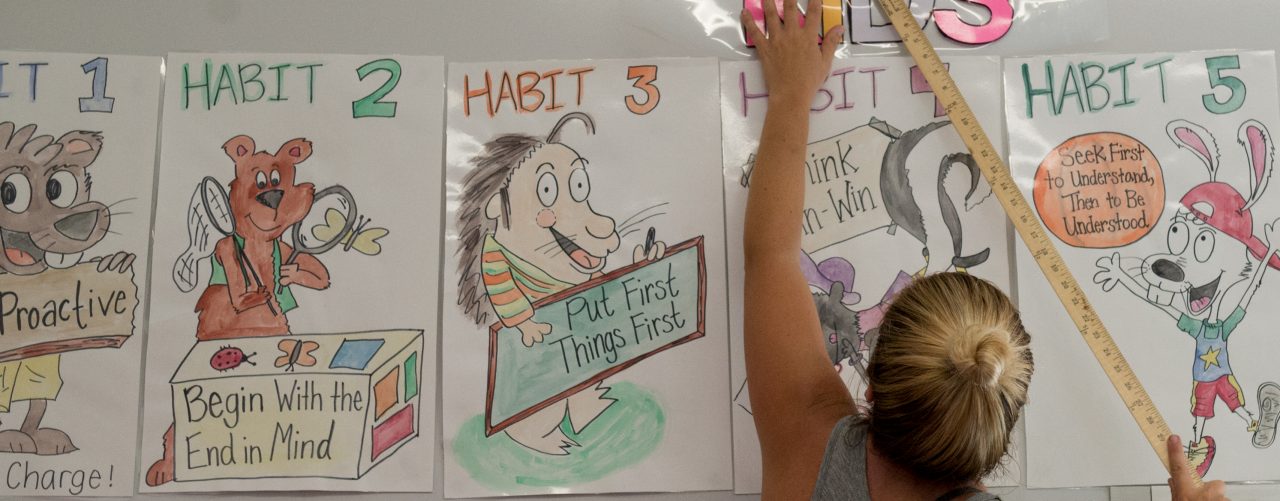
In the 19th and 20th centuries, French Canadian, Greek, Irish, and Polish immigrants settled in Manchester, N.H., to work in the mills, building neighborhoods around their churches. Today, the same neighborhoods welcome new arrivals from Latin America, Asia, the Middle East and Africa. These new Americans are greeted with new opportunities, as well as the challenges of making a new place home. One of the greatest needs to be addressed in these neighborhoods is child poverty, which affects both new arrivals and lifelong residents.
To ensure better health, education and lives for residents no matter their country of origin, the city is creating a new center of gravity for the neighborhoods: Their schools. With seed money from the Robert Wood Johnson Foundation and matching funds from Granite United Way, the New Hampshire Charitable Foundation, the Endowment for Health and the Cogswell Benevolent Trust, Manchester set up two community schools starting in 2012. The schools are safe havens in neighborhoods facing crime and violence. More than half a dozen partners bring health care, social services, family support and community-building activities such as block parties and health fairs right to the schoolhouses. Work at two more schools began last year.
“By addressing health and social factors, we can free up the teachers to do what they do best, which is to teach,” says Jaime Hoebeke, who leads the Manchester Health Department’s Division of Neighborhood Health. “They were overwhelmed with health needs.”
Many students and families at the community schools face poverty, domestic violence and drug issues, says Wanda Castillo, one of four community health workers employed by the Manchester Community Health Center to assist families at the schools. Castillo, who speaks English and Spanish, might help them apply for Medicaid, get dental treatment, talk to the electric company about a disputed balance or find housing. Two social workers—called family success coordinators—also work in the schools. As an extension of the school staff, they help keep kids in class and engaged in their schooling by calling home when students don’t show up, serving as mentors for students who are struggling, addressing behavior issues and providing brief mental health interventions.
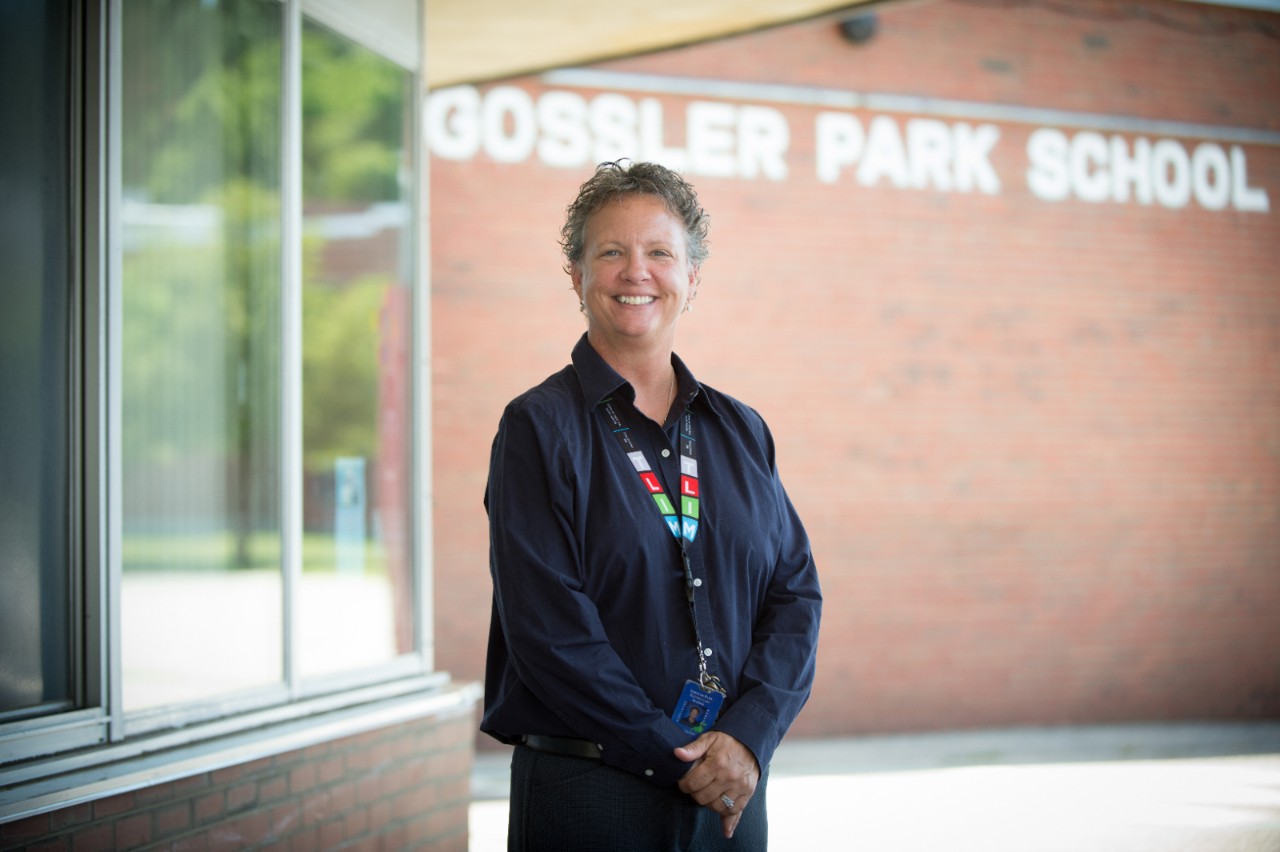 Principal Lori Upham stands proudly outside her school.
Principal Lori Upham stands proudly outside her school.
Jaime Hoebeke
At one community school, the percentage of students with 10 or more unexcused absences dropped from 45 percent to 18 percent in just one year.
Gossler Park Principal Lori Upham says in the past parents might have harbored fears about coming to school and being judged, but there’s a new level of trust between families and the school. The Leader in Me—a school-wide youth leadership and life skills program created by FranklinCovey and based on the iconic bestselling book The 7 Habits of Highly Effective People—is also making a difference, she says. Kids are speaking up more, learning leadership skills and seeing how they can be part of community solutions that contribute to the greater good.
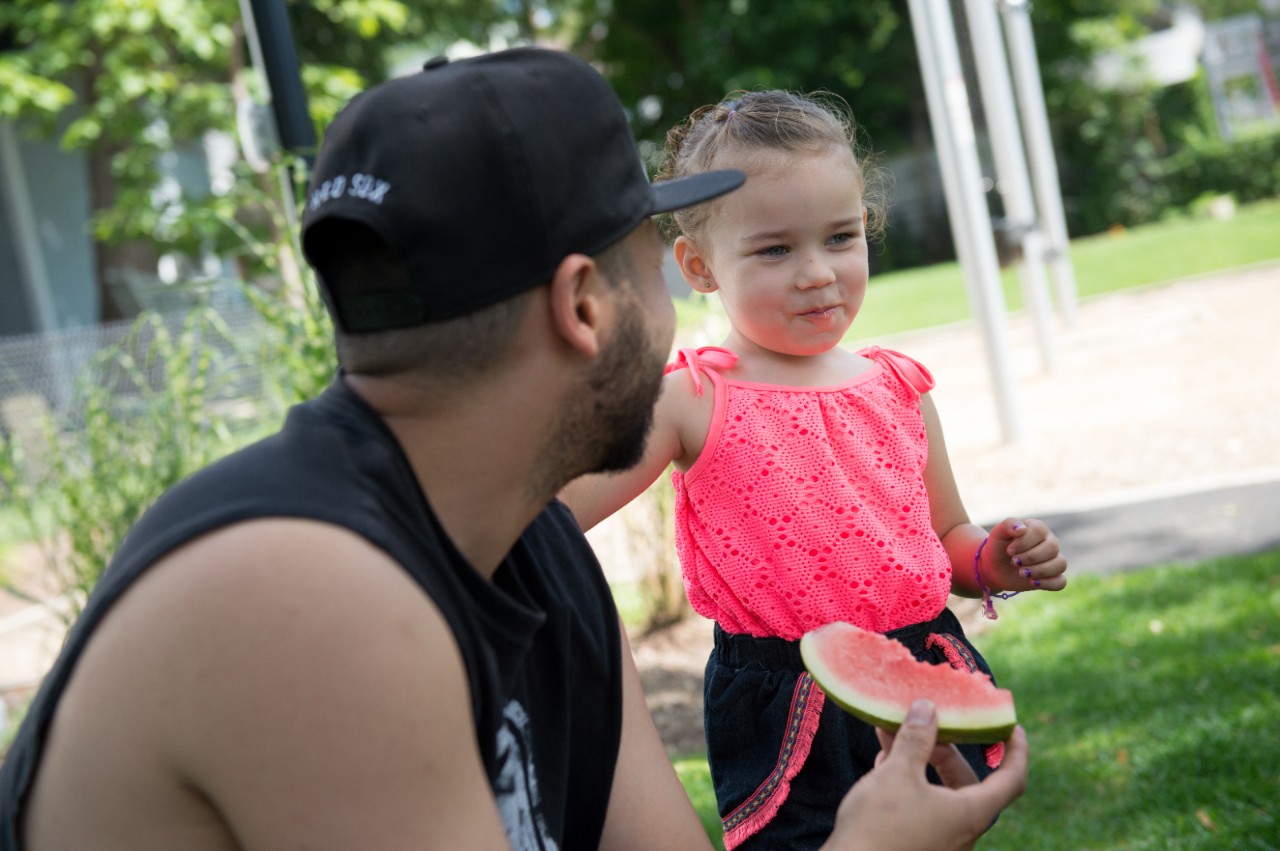
Manchester, N.H., residents have only a 1 in 4 chance of living in a home built after 1950—some of the houses and triple-decker family apartment buildings date back even further, to the 1800s. Homes that haven’t been fixed or updated over the years can harbor health hazards like lead pipes and peeling paint, poor ventilation systems and mold hidden in walls.
The city has long had separate home visiting programs for families whose children have been found to have uncontrolled, unmanaged asthma or high blood-lead levels that could damage their developing brains. In the past, visiting nurses would take the home environment into account only for the particular disease they were focused on. They might tell parents to remove peeling paint on a visit for the lead program. On an asthma visit, they might recommend keeping asthmatic children away from household chemical fumes or show parents how to better manage medications.
In 2010, these disparate services finally came together when Manchester created a comprehensive plan to boost the number of healthy homes in the city. Now, home-visiting nurses are trained to educate people about all the ways they can make their homes healthier.
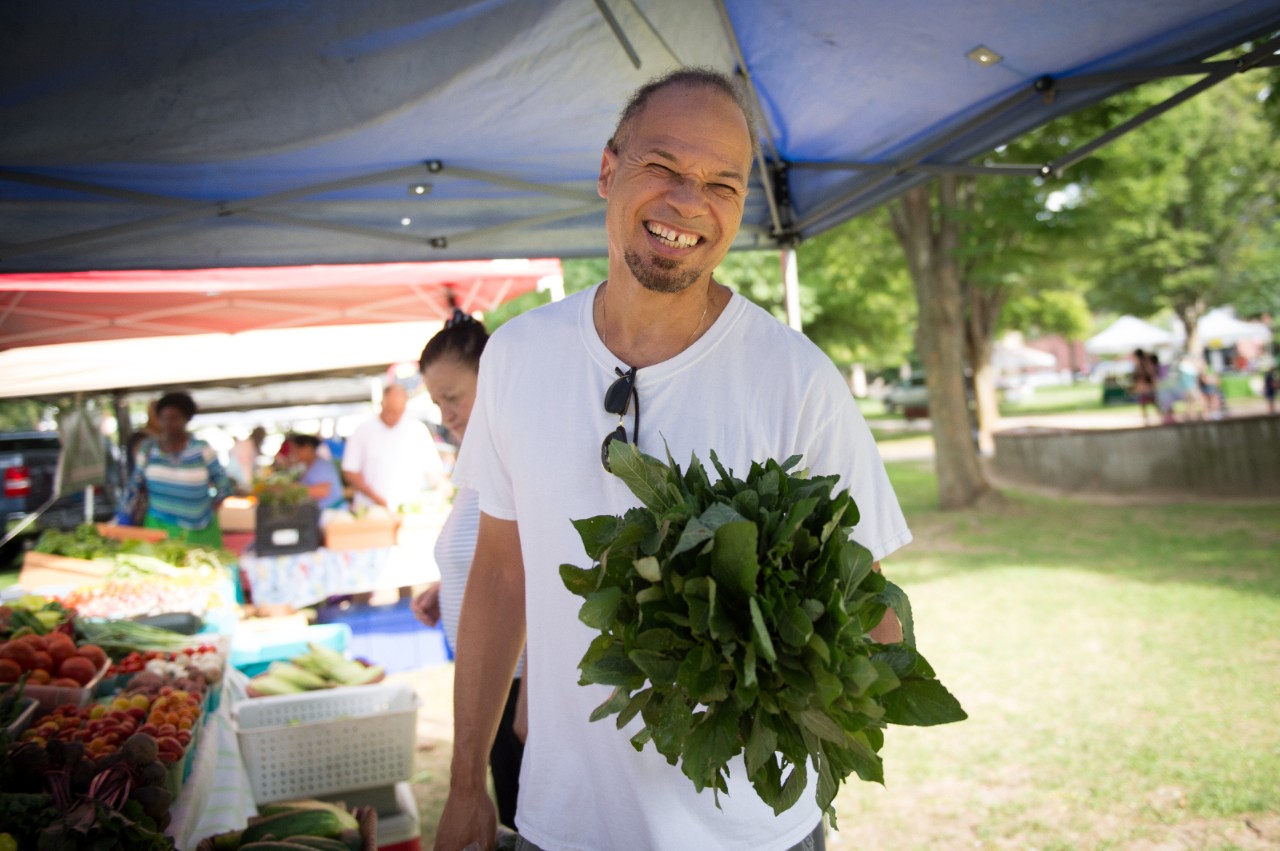 A man shops for greens at a farmer's market.
A man shops for greens at a farmer's market.
“Residents are opening their doors to our services and we need to maximize our impact while we’re there,” says Jaime Hoebeke, lead of the Manchester Health Department’s Division of Neighborhood Health.
The city and its partners are also trying to more proactively help families before children get elevated lead blood levels or are rushed to the emergency room wheezing because of asthma. This past summer the health department went door-to-door in neighborhoods with older housing stock, poverty and rampant lead issues to identify housing units that could be hazardous to inhabitants’ health. They then suggested ways to fix problems.
Overcoming the dearth of good housing stock in Manchester is yet another important way of promoting healthy homes, says Robert Tourigny, executive director of NeighborWorks Southern New Hampshire, a nonprofit neighborhood revitalization organization and real estate developer.
“There are many people so desperate for an affordable apartment that they’ll pretty much rent anything,” he says. “Making sure that a family has safe, decent, affordable housing is a must. If that family is well housed, they're going to have a healthier outcome for their children.” That, Tourigny says, begins to lift the community “because the neighborhood is going to be a better place if that family is successful and healthy.”
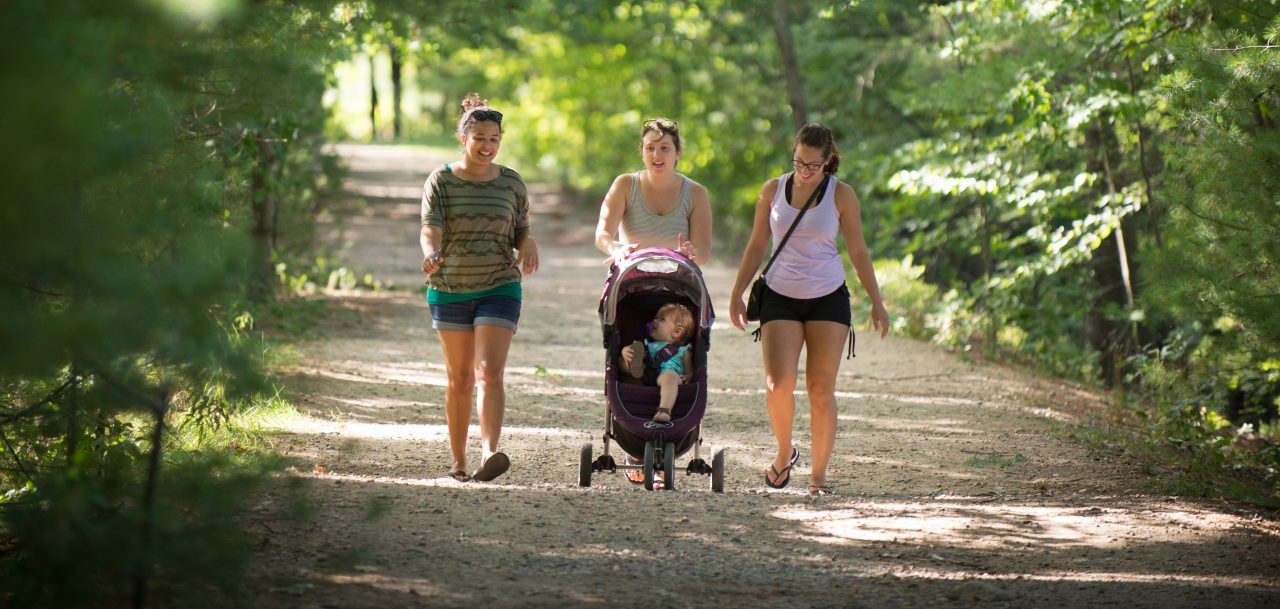 Cultivating a Fitness-Everywhere Culture
Cultivating a Fitness-Everywhere Culture
 A teacher leads a martial arts class for community members.
A teacher leads a martial arts class for community members.
At Beech Street Elementary School in Manchester, N.H., students were using the local park as their school playground. They had to cross a busy street just to enjoy recess. Then last year, Elliot Health System—a local hospital—sponsored the construction of a new school playground, which has boosted daily active playtime for the school’s 600 students.
“The city has really embraced place-based approaches and is working to improve access to, and the quality of, neighborhood assets and recreation opportunities,” says Tim Soucy, director of the city’s health department. He grew up in the city and remembers playing sports with his buddies in the neighborhood church’s gym.
Today, Soucy and many others work to make sure the city’s residents—children and adults alike—can easily be active, wherever they are. In this endeavor, the city’s industrial past has provided a valuable resource in the form of abandoned railway beds, some of which have been transformed into walking and biking trails using a combination of public and private funding. The city and nonprofit groups like Manchester Moves are working towards the completion of a network of trails that will connect with the city’s downtown and nearby towns. The Hands Over the Merrimack Bridge—a rehabilitated rail bridge dedicated in 2012—is part of that network. It enables walkers, runners, bikers and even cross-country skiers to cross the river that cuts the city in half. And last year, a smaller trestle was converted into a footbridge that connects Manchester to Goffstown, N.H., across the Piscataquog River on the city’s west side.
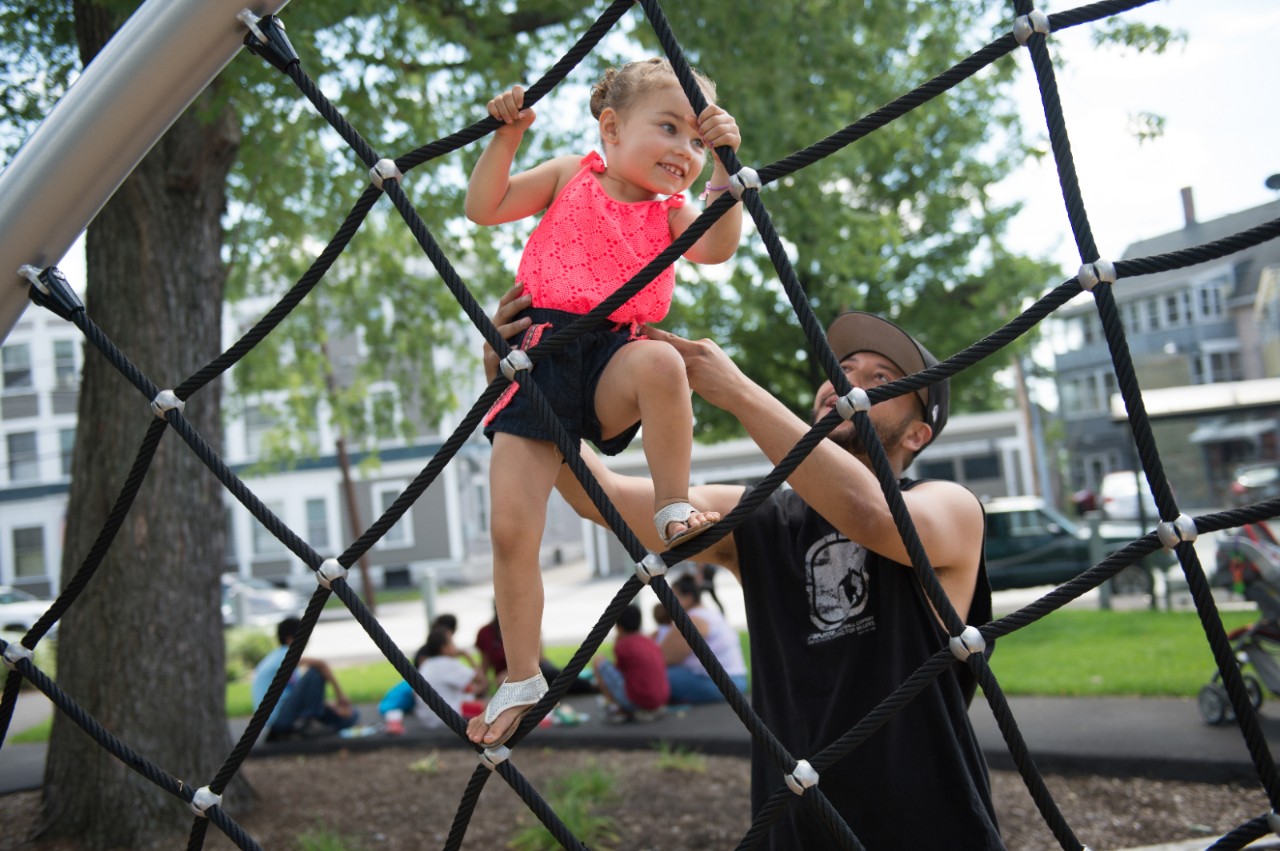 A father and child play on the climbing nets at their local playground.
A father and child play on the climbing nets at their local playground.
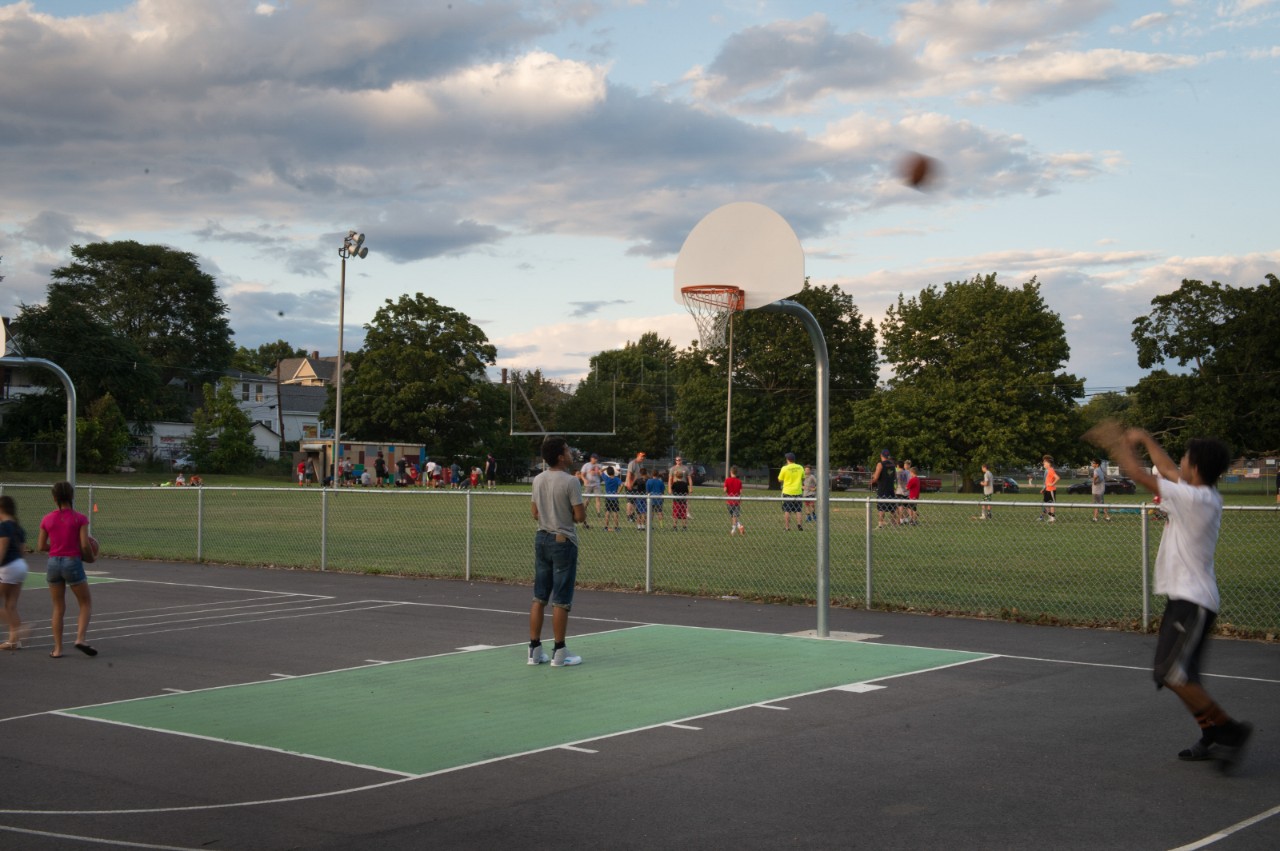 Community youth play basketball and soccer as the sun sets.
Community youth play basketball and soccer as the sun sets.
At the city’s community schools, the Granite YMCA offers free health and fitness programs in neighborhoods where people have little access to gyms or exercise facilities. Zumba has proven very popular, says community health worker Wanda Castillo, who helps families from the schools enroll in the classes.
A lifeline for the city’s school-age children for more than a decade, the Manchester Police Athletic League’s Michael Briggs Community Center got spruced up this year with a $1.8 million renovation funded by the community collaborative Building On Hope. Housed in a big, white, boxy former social hall on Beech Street, the center now sports a colorful mural on its facade. Inside, new rowing machines and exercise equipment complement the athletic league’s standard boxing, wrestling, and martial arts offerings—all free for children and teens and run by volunteer police officers.
If judo doesn’t spark a Manchester kid’s interest, perhaps fungi will. The Oak Park neighborhood’s titular park, once nicknamed “Ugly Park” and used mainly by dog walkers passing through, has been updated with resident input in ways that might surprise. There are no slides, monkey bars, or swings. Instead, children can hop from one huge faux toadstool to another, scramble up a metal “tree,” or scurry like a spider on a web-like structure.
“The neighborhood didn’t want to cut trees for one giant playground,” says Jaime Hoebeke, head of the health department’s Division of Neighborhood Health. “They wanted to embrace nature.”
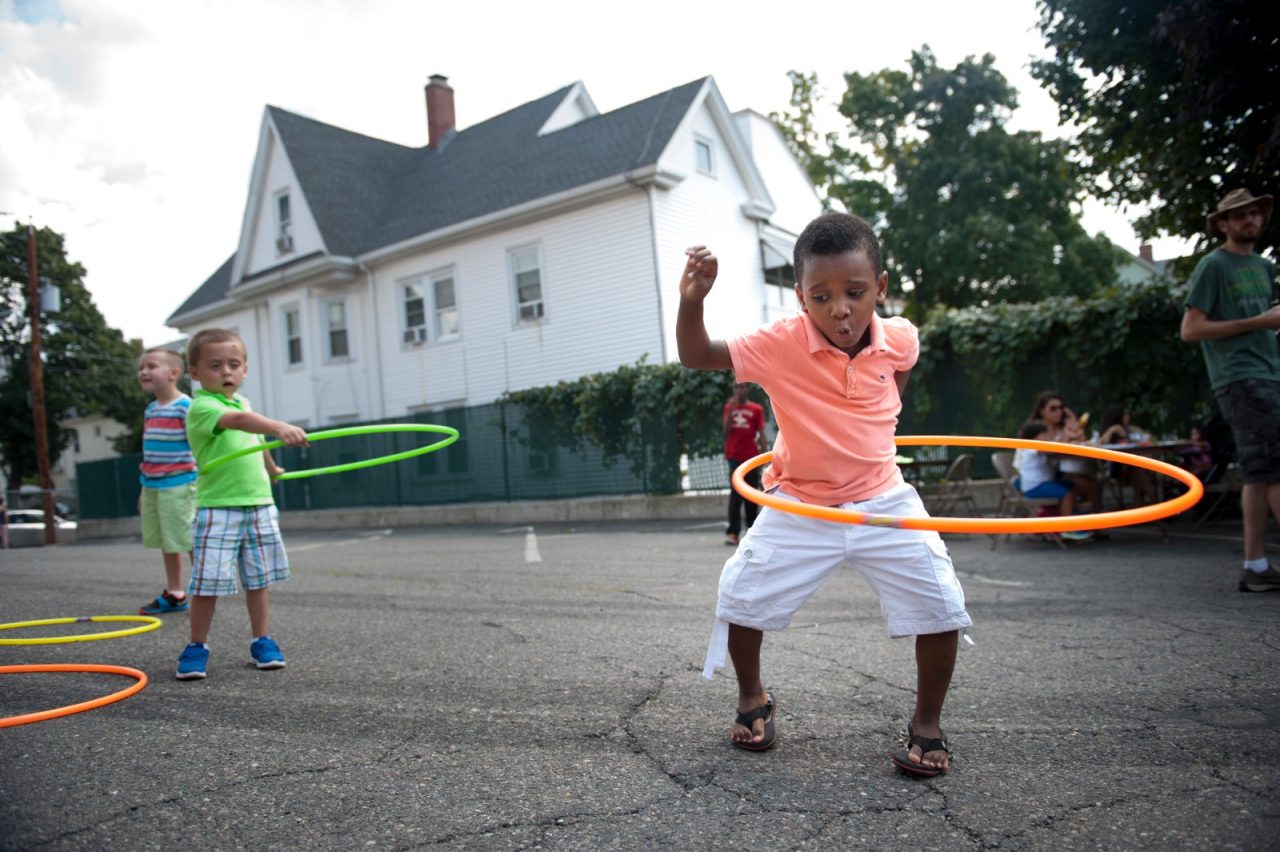
The Prize honors and elevates U.S. communities working at the forefront of advancing health, opportunity, and equity for all.